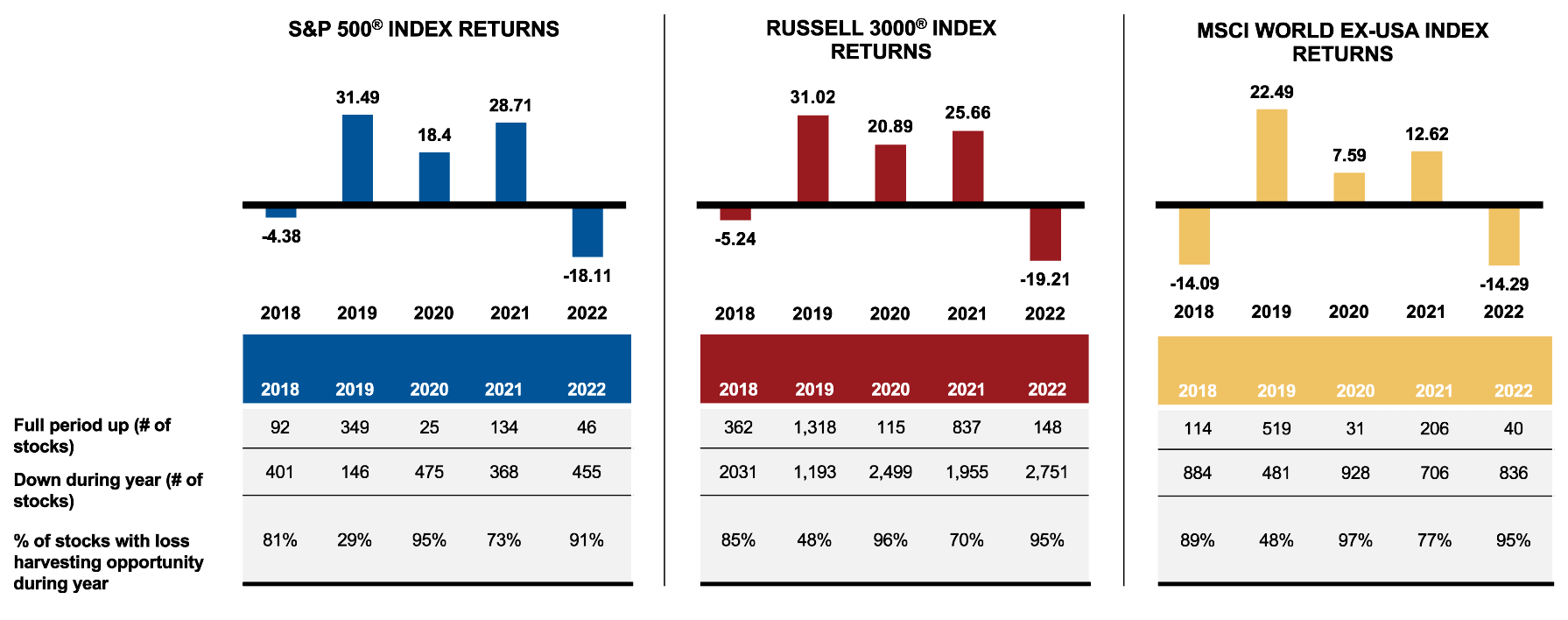
(Russell Investments) Many high net-worth individuals are planning on selling a business, property or large stock position in the future. These types of sales typically generate a significant capital gains tax liability that needs to be planned for years in advance. Unfortunately, many advisors fail to help clients look this far into the future and have yet to put a plan in place.
This gap could provide an opportunity for you to introduce Direct Indexing. With Direct Indexing, investors can manage their portfolios in a way that minimizes capital gains taxes by selectively harvesting losses, offsetting gains, and implementing tax-efficient trading strategies.
A Direct Indexing strategy can potentially earn a return similar to a chosen benchmark—while simultaneously harvesting losses that can be stockpiled to offset the future capital gain. This can help the investor manage their tax liabilities and potentially reduce the taxes due on the future financial windfall. Starting this process early gives the client (and you) plenty of time to adapt and adjust over time as the markets move—and as the investor's situation evolves.
First, identify the potential for your client to realize a windfall. This may depend on how close they are to retiring or making another significant life change. Once you and your client determine the source of the future windfall, and the timing, you can then explain to your client how to use Direct Indexing to either reduce the potential tax liability over time or manage the tax liability within a certain budget parameter.
How does Direct Indexing help solve this issue?
With Direct Indexing, the investor owns a basket of individual securities, each with their own cost basis. The basket is generally held in a Separately Managed Account, which gives the investor the ability to buy and sell those individual securities. While the process is a little more complex than this, essentially the investor can sell the stocks that have fallen and replace them with similar names. This process can be done on an ongoing basis, which can help the investor build those tax "assets" to use in the future.
At Russell Investments, our trading team is systematically looking for opportunities to harvest losses all year long, while balancing risk and index tracking. These losses can then be carried forward indefinitely and used when appropriate to offset capital gains produced from the client's financial windfall.
A common question I often encounter is whether tax loss harvesting is only effective during years when the markets are performing poorly. Clients are often surprised to learn that every year the stock markets provide investors with opportunities to harvest losses.
The chart below shows how many of the individual names within three key equity indexes were down at specific points in the past five years, even though the indexes themselves rose significantly in three of those years. Clients who invested in a Direct Indexing strategy would have had the opportunity to take losses in those names and bank them against their gains—all while maintaining performance potentially similar to that of the index.
Even in "up" years, there are opportunities for loss generation
Click image to enlarge
Source: Morningstar Direct. Analysis is based on S&P 500, Russell 3000 and MSCI World Ex-USA Index constituents as of 12/31/2022. "Full period up" indicates stocks that were never down YTD at the end of any month during the year. "Down during year" means stock was down YTD for at least one month during the year. Stocks that do not have full year returns were excluded. Index returns represent past performance, are not a guarantee of future performance, and are not indicative of any specific investment. Indexes are unmanaged and cannot be invested in directly.




